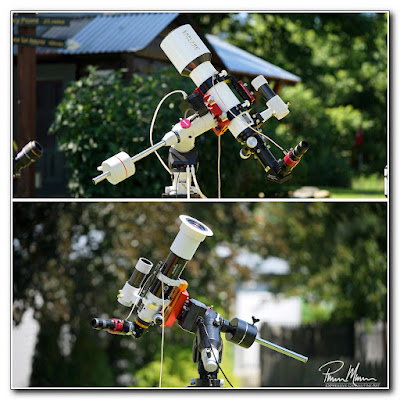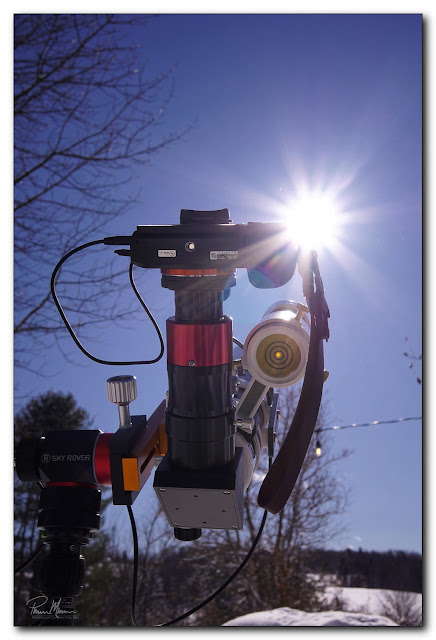Solar Observing with Two Eyes

T he sky was clear this morning so I decided to do a little solar observing rather than woodworking. I'd really like to get the two woodworking projects I am working on finished but I couldn't pass up the clear skies especially since I haven't really done any solar observing yet this year. I had a couple of things related to solar observing that I wanted to try so it seemed like a good morning to do some experimenting with astronomy gear. The weather should be nice for the next few days so I could easily put off the woodworking projects for a day so I could finally get to spend some time observing the sun. I had a lot of nice success with a larger telescope when using my new binoviewers while viewing the moon, Venus and Mars last night so I wanted to try solar observing with the same binoviewers for solar observing. Viewing with two eyes provides far less eye strain than viewing with one eye and eye strain is something I have been experiencing lately. ...










